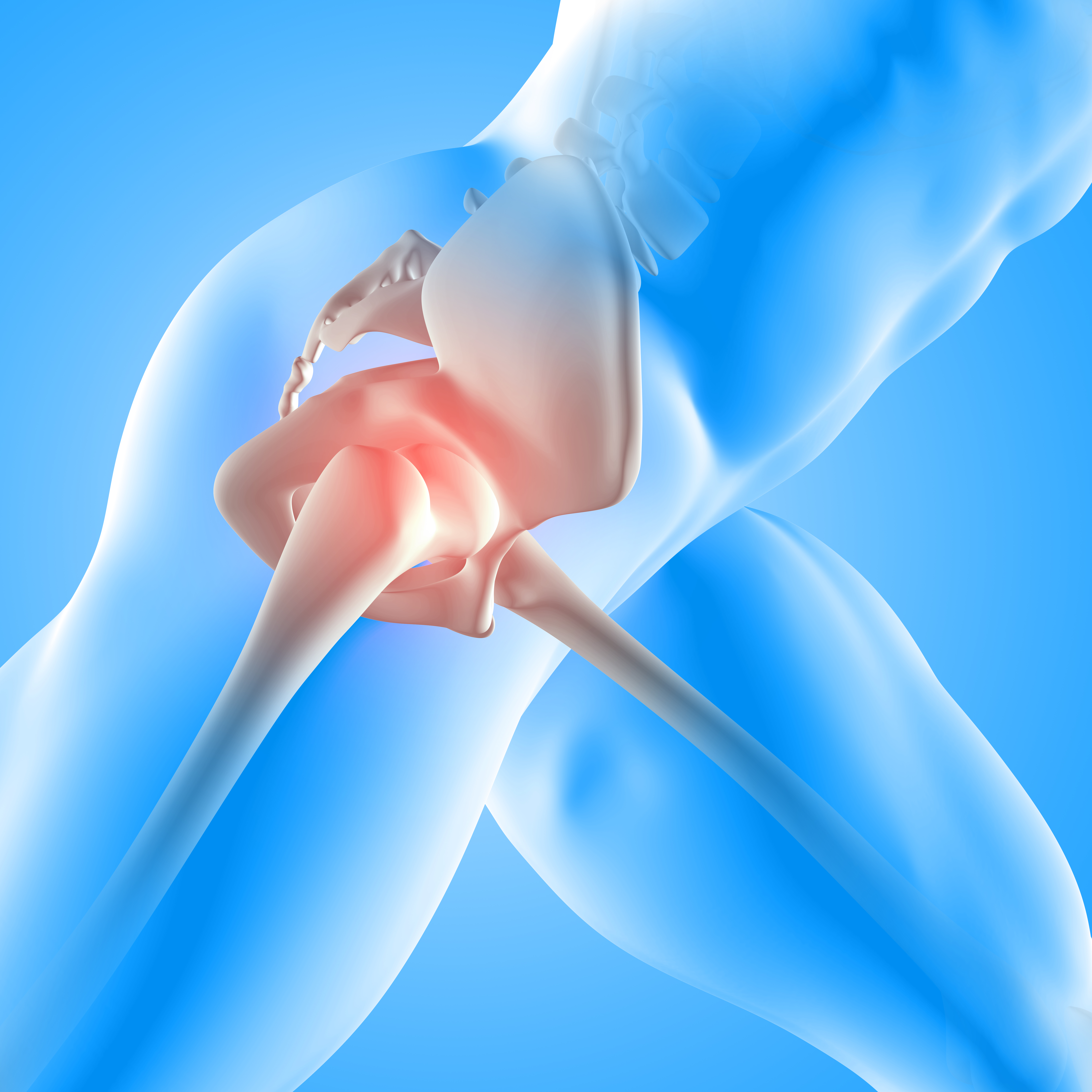Hip Conditions
The hip is an essential joint that forms a connection between the pelvis and the thigh bone. Besides being the largest joint in the human body, the hip joint is usually stable and not easily hurt. For this reason, it bears massive pressure through daily activities like walking, running, jumping and squatting.
Read on to understand different hip conditions, causes and risk factors, as well as an understanding of how to get hip pain treatment.
Different Causes of Hips Problems

An X-ray Image Showing Osteoarthritis of the Hip
Below are the common causes of hip disorders:
- Osteoarthritis
Osteoarthritis is a common cause of hip pain that affects people as they age. It is prevalent amongst overweight patients and those aged 50 years or older. The condition is characterized by worn-out joint cartilage and substantial bone changes around the joint.
Typically, a cartilage cushion exists between the pelvis and thigh bone inside the hip joint. When the cartilage cushion breaks, you have Osteoarthritis.
- Bursitis
Bursitis is an inflammation of the bursa, a fluid-filled sac that regulates friction between bones and muscles. The abnormal inflammation usually results from an infection, injury or overuse of the hip joint. As a result, you may experience severe pain, swelling and inability to move the affected joint.
- Hip Bone Fracture

An Image Showing Hip Bone Fracture
Hip fractures are common in older people since bones decrease in density as we grow older. As per the American Academy of Orthopedic Surgeons, more than 300,000 Americans sustain hip fractures yearly. Incidentally, most fractures involve older patients aged 65 years or more.
Younger people can also sustain hip fractures, usually due to falling off a ladder or a vehicle collision.
- Rheumatoid Arthritis
Rheumatoid arthritis is one of the autoimmune conditions occurring when the body’s immune system mistakenly attacks joint membranes. Like Osteoarthritis, the condition causes inflammation in the joint areas, including the hip, hands, elbows, neck and shoulders.
- Hip Dislocation
A hip dislocation is an injury to the hip joint in which the upper head of the thigh bone moves out of its usual socket within the pelvis. Usually, a hip dislocation occurs when the joint experiences a massive force, such as in a car accident or falling from a high object. Hip dislocation may also occur after surgical operations such as joint replacement.
Risk Factors of Hip Disorders
Hip conditions can affect everyone, regardless of age, gender or health status. However, certain factors will likely increase your chances of developing the condition.
Below are the major risk factors associated with hip complications:
- Age and Gender
As you advance in age, you are at a higher risk of developing hip complications due to a decrease in bone density. That explains why hip fractures are more common in people aged 50 years or older.
- Health Condition
Some medical conditions can increase your chances of having hip injuries. For instance, osteoporosis causes bone degeneration, making them likely to break. Similarly, intestinal conditions that inhibit your body’s ability to absorb vitamin D and calcium can lead to hip complications.
- Medications
Sedatives, antipsychotics and sleep-inducing medication can cause dizziness, increasing the risk of falling. Cortisone medications may weaken your bones after long-term use, increasing your chances of having hip joint complications.
- Lifestyle
Your lifestyle choices affect your general health and determine your risk of hip disorders. For instance, if you don’t engage in regular weight-bearing exercises like walking, you may develop weaker bones, exposing you to fractures.
- Nutritional Deficiency
Vitamin D and calcium are two essential minerals that promote healthy bone formation. Conversely, a deficiency in both minerals leads to weaker bones. Therefore, it is advisable to eat calcium-rich foods to enhance bone density and strength.
How Does Hip Treatment Work?
Although there are various treatment options, hip treatment usually focuses on the condition’s specific cause. As a result, you should understand the cause of your condition before obtaining treatment.
Below are hip pain treatment options:
- Rest
The first treatment is to have enough rest and allow the pain to reduce. If your symptoms persist, your doctor may recommend crutches or walking aids.
- Exercises
You can exercise the muscles and tendons surrounding the hip joint to relieve pain. However, you should adopt a regular exercise routine for effective results.
- Therapy
Like other orthopedic conditions, therapy is effective in treating hip joints. Therefore, your doctor may recommend physiotherapy modalities to help you regain mobility, increase muscle strength and resume a normal life. In addition, ice packs may be effective for minimizing swelling, while heated pads will help soften rigid muscles.
- Medication
Your doctor may prescribe anti-inflammatory medications to relieve pain from arthritis, tendonitis and bursitis.
- Surgery
Surgery is usually the last treatment resort for hip complications. A hip replacement surgery is typically ideal if your condition limits routine activities such as walking. In addition, surgery may be suitable if pain persists or muscle stiffness limits you from moving your leg.
Make an Appointment and Connect with Us to Treat Hip Conditions
The hip joint is an important element of the lower body structure. Although it is relatively stable compared to other joints, it is still prone to complications through daily activities. If you suspect you could have a hip dislocation, fracture or injury, do not hesitate to contact Sforzo, Dillingham, Stewart Orthopedics+Sports Medicine for diagnosis and treatment.


